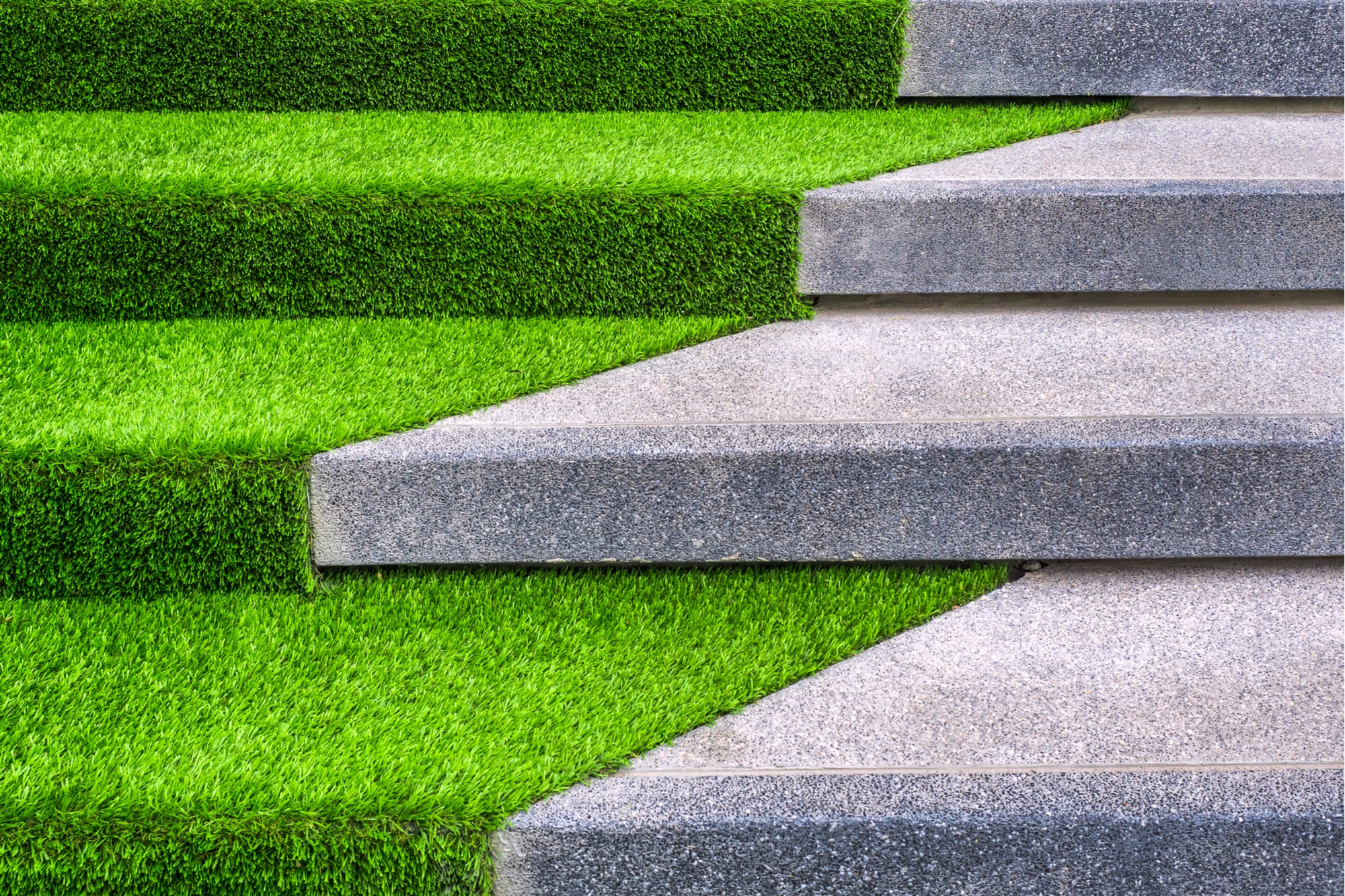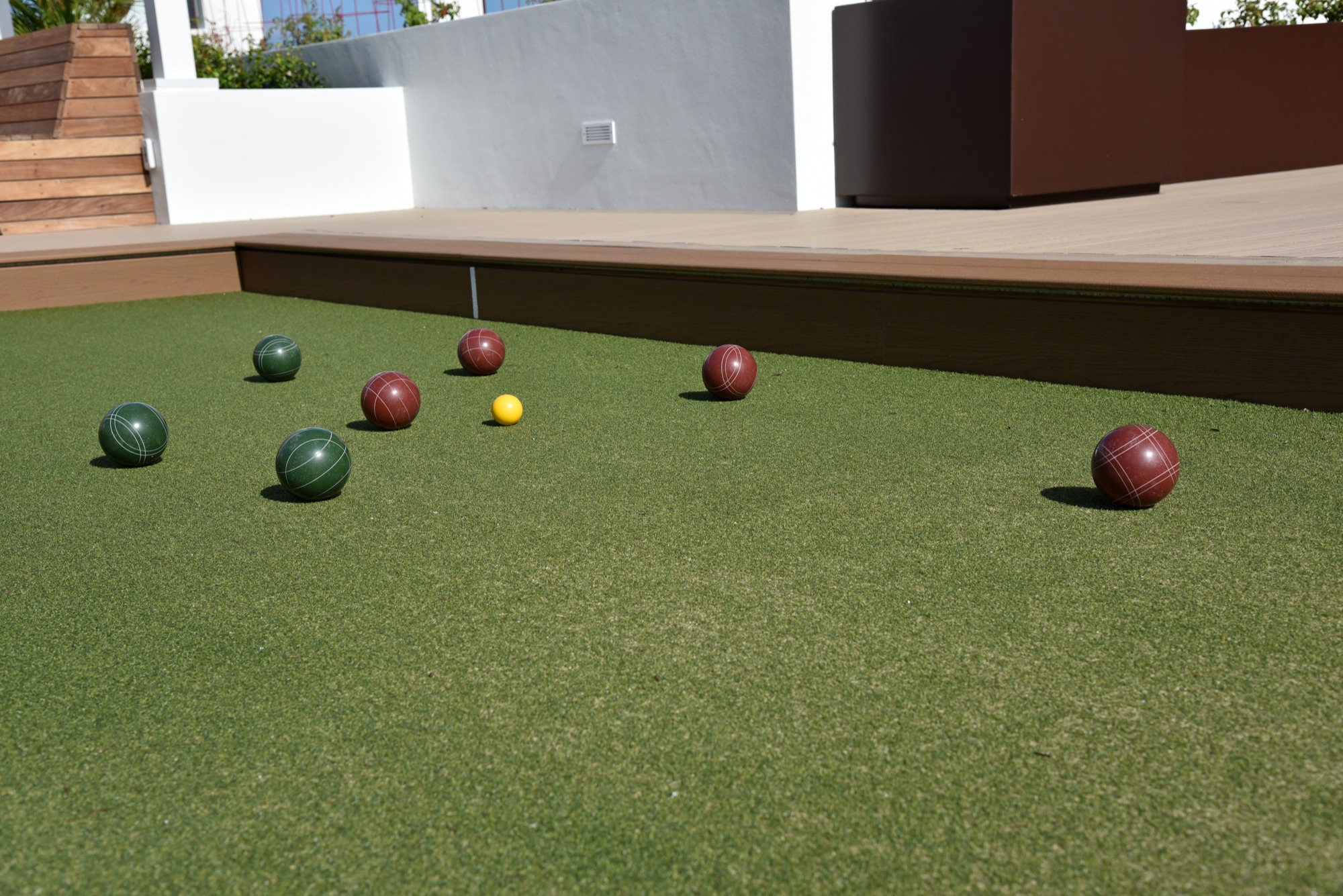Can I Install Artificial Grass on Top of Concrete or Asphalt?

A growing number of homeowners are becoming aware of just how luxurious and real artificial grass now looks and feels. Turf technology has come a long way over the years, which has led to an increased interest in including manufactured lawns in landscaping design. Most often, homeowners who choose artificial grass do so because they either want to conserve water, save money and do their part to save the environment or because they want a lush, inviting lawn that is always green without hours of mowing, watering, weeding, edging, fertilizing and aerating.
It is common to see artificial lawns installed instead of natural grass when landscaping is initially designed or installed to replace a natural grass lawn. When this is the case, installers are able to prepare the base to ensure proper drainage and a surface that is cushiony and comfortable for you, your family, your guests and your pets to use.
However, there are occasions when folks would like to have a beautiful lawn in areas that are currently home to an asphalt driveway or concrete patio. This, of course, leads these same folks to wonder – can artificial grass be installed on concrete or asphalt?
The short answer to this is that, yes, fake grass can be installed on top of asphalt or concrete. In some ways, it is actually a simpler process than properly installing it, since there are not multiple layers of base to prepare before laying down the grass. However, while it is possible, it does not mean that it is ideal. So, before you start laying your artificial turf over that unwanted, concrete patio, let’s take a look at a few issues you should consider.
Problems with Installing Artificial Grass on Concrete or Asphalt
First and foremost, the most common problem with installing fake grass on concrete is inadequate drainage. When installed with a properly prepared base, synthetic lawns drain at about the same rate (or better) than natural lawns. This is not true when installed over concrete.
Water from rain, melting snow or nearby irrigation systems will not be able to drain into the base below the grass and may sit between your concrete and the backing material of the grass. This can cause mold or mildew issues under your grass, which could come up through the backing if left unchecked. It may also lead to standing water and large puddles on your grass, rendering it unusable until the water eventually drains or is removed.
You may read online that you can put a layer of sand between the concrete and grass to improve drainage; however, it is often the case that the sand will simply wash away over time, since it is sitting on top of a smooth, solid surface.
A second, common issue with installing artificial grass over concrete or asphalt is that the surface is hard and solid, so it does not provide the cushiony feel of real grass or the softer place to fall that children and pets enjoy while running and playing on natural grass or properly installed synthetic grass. If you do not plan on using your lawn for physical activities, this might not be an issue; however, if you have children, pets, grandchildren or any plans on using the grass yourself, you will need to take this into consideration.

Tips for Installing Artificial Grass Over Concrete or Asphalt
In some cases, installing artificial grass over concrete will improve the surface and make it better suited for your intended use. For example, a concrete pool deck can be slippery, but covering it with synthetic turf can provide a more attractive, safer surface around your pool. Another example would be a play area that is currently concrete or asphalt. Installing a manufactured lawn with good cushioning on top of the solid surface can make the area much more fun and provide your children with a more comfortable surface on which to play. If you have ever attended an indoor soccer game, you have likely already seen an artificial lawn successfully installed over a concrete floor.
If removing your concrete or asphalt does not fit in your project budget, or if you simply want to keep the solid surface under your lawn for a faster, simpler installation, talk to your installer about what you can do to make your turf function properly for your intended use.
For example, your installer may recommend installing drainage tiles between the concrete and grass to improve drainage and air circulation. Your installer may also recommend a layer of padding to soften the surface or may recommend a thicker grass product to provide more cushioning. If there are weeds growing through cracks in your concrete, your installer will also likely recommend a layer of landscaping fabric to limit weed growth.
Artificial Grass Installation: Additional Resources
- Synthetic Grass Installation Process
- How to Find Paver + Artificial Grass Installation Companies (Step-by-Step Guide)
- Can I install Artificial Grass on Top of Real Grass?
- Artificial Grass Cost: Fake Turf Installation Prices Guide
- 9 Reasons Southern California Homeowners Are Installing Artificial Grass